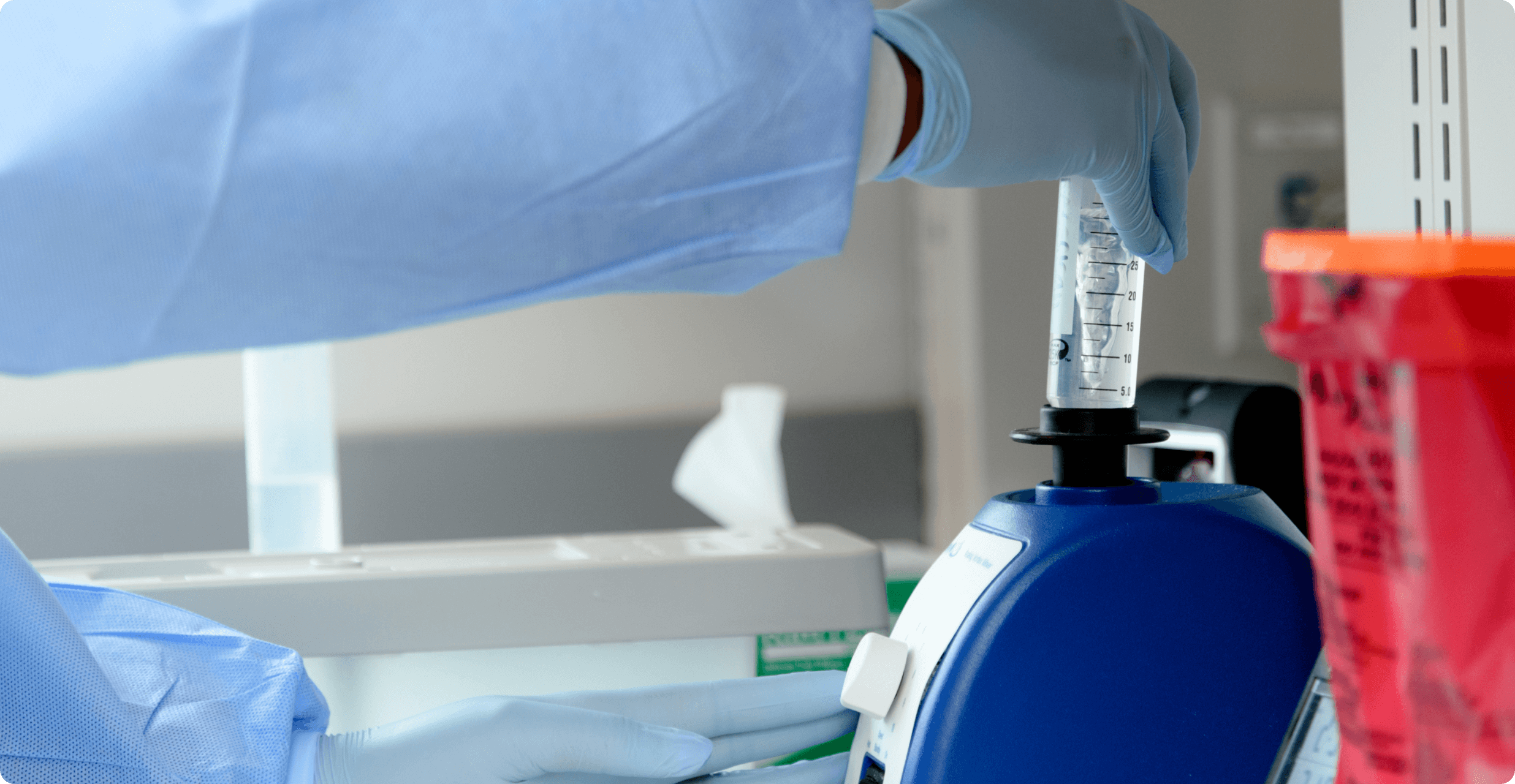Blog | Aug. 30, 2023
MRD in AML: the next step in fighting leukemia

For a patient to go through the invasive procedure of a traditional biopsy in order to obtain a conventional biopsy, we in the molecular diagnostics testing industry often do not think about what patients often have to go through to get a tissue biopsy. Often patients will be asked to fast the night before; to request a care partner to take a day off to accompany the patient; to learn the risks of complications with the procedure and signing the paperwork; to deal with the recovery and any complications that may arise.
This recent essay in Stat News was written by a board-certified patient advocate specializing, ironically enough, in advocating for cancer patients. And she states clearly, “I hope I never have to undergo a biopsy like that again. It’s why I’m incredibly excited at the prospect of what are being called liquid biopsies.”
Blood-based cancer diagnostics, whether based on the analysis of cell-free circulating tumor DNA (ctDNA) or circulating tumor cells (CTCs), hold tremendous promise for targeted therapy selection, response prediction, and monitoring resistance and recurrence of cancer. Increasingly the field is expanding into cancer prognosis and early-detection and screening applications, although these applications are a few years away from wider adoption.
Investors in liquid biopsy have made major investments, from Guardant Health’s successful IPO (and rising over three-fold since going public) to GRAIL’s Series B funding of $900M bringing its total valuation to an eye-watering $1.5B. Other success stories in non-invasive cancer diagnostics include Exact Science’s 79% growth in sample volume compared to the year earlier, and this popular consultancy estimates $4B invested into liquid biopsy companies over the past three years..
In lung cancer, specifically non-small cell lung carcinoma (NSCLC), it has been known for many years that ‘activating mutations’ in the EGFR gene occur in 10%-30% of unselected lung cancer patients. Of these with EGFR mutations, the Exon 19 deletion mutations and the point mutation L858R in exon 21 are the most common and called ‘classical’ mutations (about 85% of all EGFR mutations). Patients with these mutations initially had standard-of-care treatment with the first-generation tyrosine kinase inhibitor (TKI) erlotinib or the second-generation TKI gefitinib. In 2016, the FDA approved the first ctDNA liquid biopsy test, the Roche cobas EGFR Mutation Test v2 in cases where insufficient tissue is available, or where obtaining tissue is not practical.
Upon generation of resistance to the first- or second-generation TKI’s by the emergence of the T790M mutation (approximately two-thirds of patients on first- or second-generation TKI’s progress with the T790M mutation), the FDA approved shortly afterwards the same EGFR Mutation Test v2 for the T790M resistance mutation as a companion diagnostic for the third-generation TKI osimertinib. In late 2017, or a little over a year after the first- and second-generation TKI’s were approved, was osimertinib recommended as first-line standard of care for advanced NSCLC by NCCN. The reason for the change was an almost doubling of the progression-free survival (PFS), a remarkable advance in the treatment of advanced NSCLC.
Sysmex-Inostics also provides a full menu of EGFR testing options through our CLIA-qualified service laboratory in the US and ISO 9001 laboratory in Germany (FRUO). Both laboratories adhere to Good Clinical Practices guidelines. Given the speed at which new molecularly-guided therapies are developed with companion diagnostics, there is a need for a flexible testing provider to keep up with the frequent changes in the practice of precision medicine.
We will use this blog to dive deep into technical topics, to react to news that affects the world of liquid biopsy testing, to look deeper into the best-fit of tests for its particular intended use, and to share product- and company-related information. For example, on technical topics we anticipate discussing how many copies can be reliably detected at 0.1% MAF from 10 ng input, given the sampling limitations of stochastic variation; and for best-fit of tests we can look into the available tests for minimal residual disease (MRD) monitoring.
And for company information, we will have an online web presentation called “OncoBEAM ctDNA testing for early response prediction and therapy surveillance in melanoma and pancreatic cancer” provided through our partner GenomeWeb.
Please consider registering here for periodic blog updates, and contact us for project inquiries.